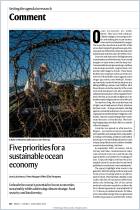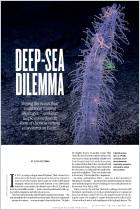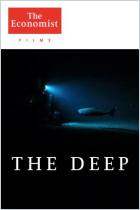
Protect the Neglected Half of Our Blue Planet
Maintaining momentum is crucial as nations build a treaty to safeguard the high seas, argue Glen Wright, Julien Rochette, Kristina M. Gjerde and Lisa A. Levin.
Recommendation
The high seas are the world’s last conservation frontier. They comprise over 40% of the Earth’s surface, yet have remained largely unprotected. The United Nations is trying to change that. It has initiated a process to develop the first comprehensive, internationally binding treaty to protect the biodiversity and sustainability of the world’s oceans. In the journal Nature, four experts discuss what it will take to make such a treaty effective. The article provides solid background on the ongoing, high-stakes negotiations, which are expected to conclude sometime after 2020.
Summary
About the Authors
Glen Wright, Julien Rochette, Kristina M. Gjerde and Lisa A. Levin are scientists affiliated with the Institute for Sustainable Development and International Relations (IDDRI) in Paris, the International Union for Conservation of Nature in Gland, Switzerland, and the Scripps Institution of Oceanography at the University of California, San Diego.



















Comment on this summary or Start Discussion